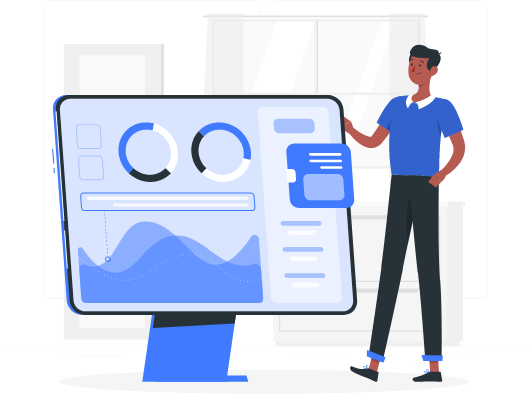Web portal solutions allow parties in businesses to access organizations' data according to their needs and roles. They make it easy to manage data and the flow of information. They also help minimize the dependency on the support team.
There are various types of web solutions depending on their purposes, such as customer portal, partner portal, supplier portal, etc. Hence, creating it requires thorough research and planning.
Before starting the development process, you need to decide who will use it and incorporate trends and features accordingly.
Here are the four primary steps that you need to follow for web portal development.
1. Plan
The first stage in web portal solutions is planning. Here you need to identify its objective. Find out the primary goal of your web portal, target audience, etc. Figure out how it can benefit target users.
Once you're clear with it, decide on the features to include. Though it would differ based on the industries, here are some standard features to add:
- Personalization
Personalization is one of the must-have features in a portal. With role-based access, you can let users see only the required information. This way of providing relevant information helps personalize the experience and enhance security.
- Navigation
Seamless navigation enhances users' browsing experience. Therefore, make sure that your web solution provides easy navigation so that customers can access relevant data instantly.
- Responsiveness
Responsiveness is the need of the hour. As customers prefer mobile apps over desktops, web portal solutions must be responsive. Ensure that they work seamlessly on all devices while keeping the UI and UX experience consistent.
2. Design
Design is important for web portal development as it's the look and feel that attracts the customers in the first go. A few components to consider before designing the frontend are:
- Add multiple ways of communication. Facilitate real-time communication. Offer features like live chat, chatbots, hotline, email services, etc.
- The font and theme of the entire website, including each section, should be uniform.
- Images should be neat, high-quality, and comprehensive.
- The colors should be in contrast with the brand.
- It should have a search option for a better customer experience.
3. Develop
A web portal differs according to businesses, features, users, etc. So, in this stage, you need to make sure that it is user-friendly, feature-rich, scalable, and secure.
4. Test and Maintain
After developing the solution, the next stage is testing it. Testing helps detect the bugs in the solution. You can run quality assurance tests to eliminate minor bugs and issues.
For a portal, you can perform various tests such as load testing, software testing, integration testing, etc. They will ascertain that it is ready to deploy.
Here are some factors to check before launching a web portal:
- Cross-platform compatibility
- Responsiveness
- UI and UX
- Optimization
- Features and functioning
- Quality and relevant content
If done rightly, testing can increase customer satisfaction. This can help you grow portal usage, user relationships, and brand building.
The last stage of web portal development is maintenance. After launching your customer-centric solution, you need to look for technology upgrades, migration, the addition of new features and updates, etc. It's necessary to keep the portal up-to-date with the latest technology and relevant content.
Few reasons to go for web portals:
A web portal is highly interactive. It improves the customer interaction and enables them to connect in different ways. Second, it frees the support team by automating the ticketing process. Instead, they can focus on priority tasks and queries. Third, it streamlines internal and external processes, and also improves customer experiences.
What's Next?
Develop a custom web portal as one size doesn't fit all. For that, choose a development team that can help you build a portal tailored for your business. While choosing the team, ask them their development procedure, whether they would provide post-launch support and maintenance or not.
Don't forget to ask for the right estimate of web portal solutions to avoid hassles later.
Mr. Maulik Shah is the founder & CEO of CRMJetty , a hub of innovative customer relationship solutions, provides ready to CMS integrate portal solutions for various CRM, including web portal development, web portal solutions. Maulik is a tech enthusiast and writes about the various aspects of e-commerce technology.

Post new comment
Please Register or Login to post new comment.